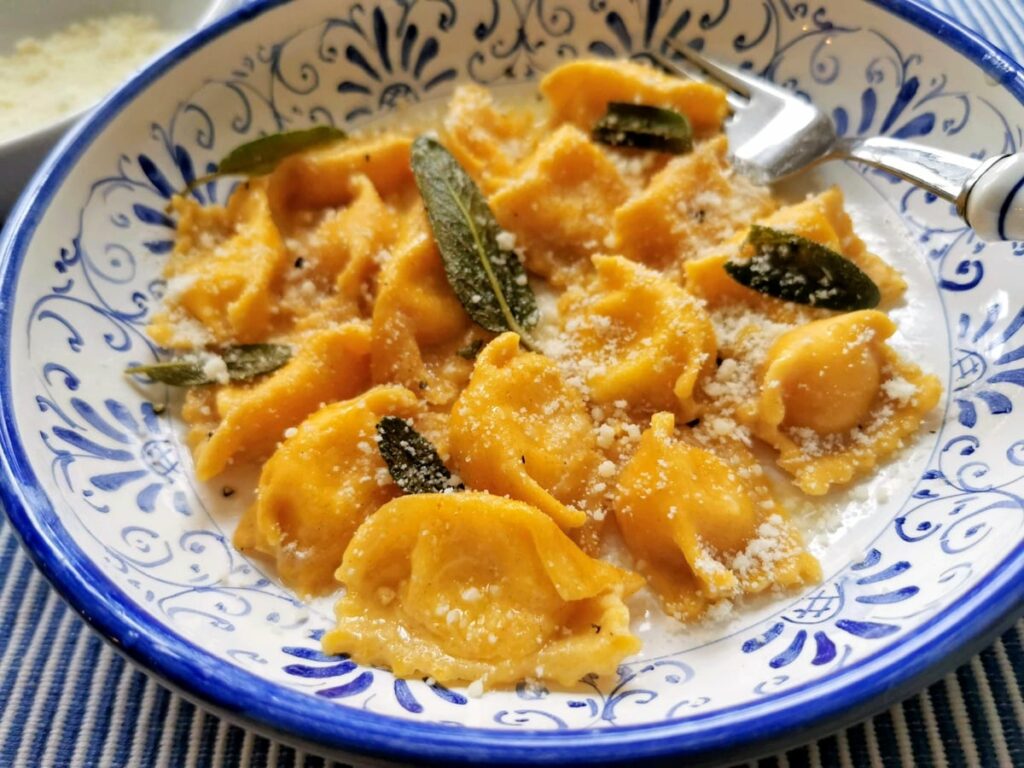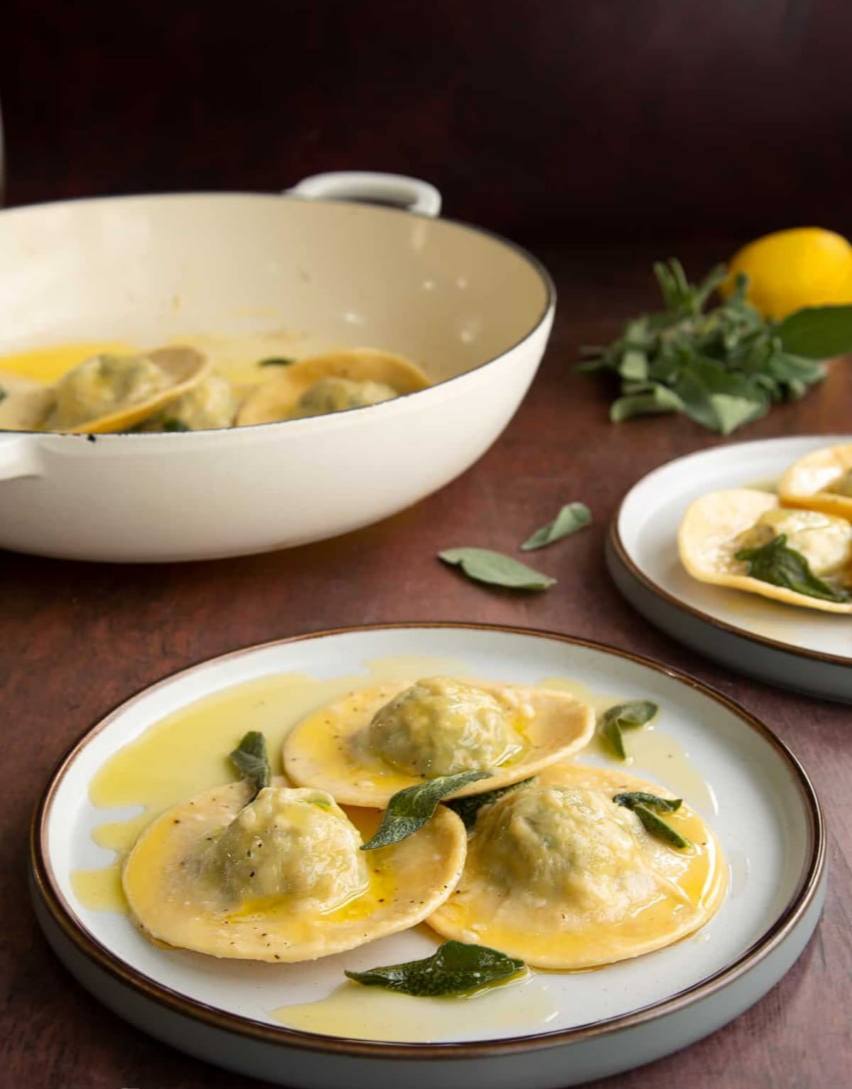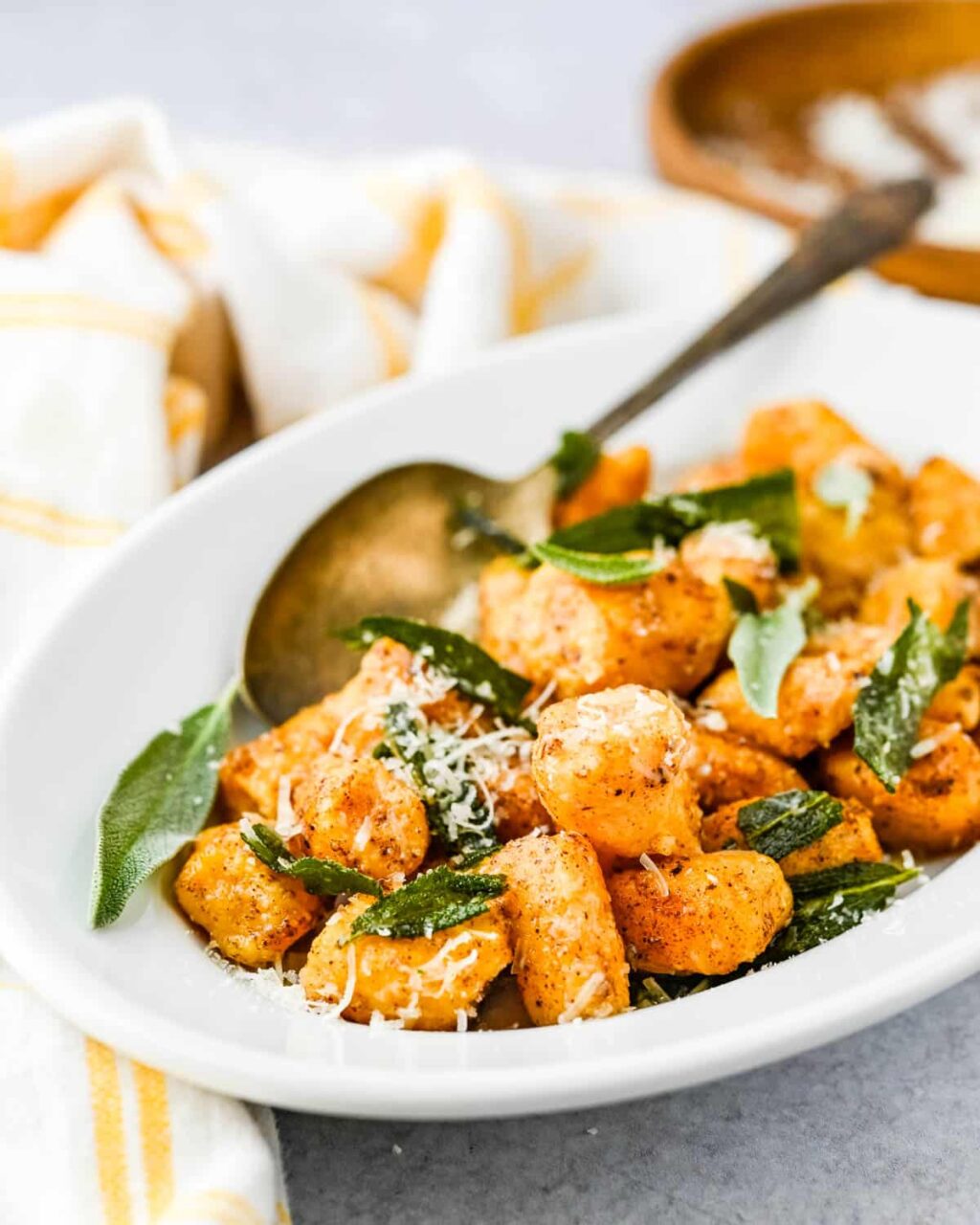The art of preserving fresh herbs has long been a topic of interest among cooks and gardeners alike. The delicate flavors of these culinary gems can transform any dish from simple to divine. One such herb, Sage, is renowned for its unique and robust flavor. This article will address a common question many Sage lovers ask: Can I freeze Sage?
Contents
What is Sage?
Sage, or Salvia officinalis, is a perennial, evergreen subshrub, with woody stems, grayish leaves, and blue to purplish flowers. Native to the Mediterranean region, Sage is used extensively in cooking for its unique, slightly peppery flavor. It complements many dishes, particularly those with pork, beef, duck, and chicken.
Fresh vs Dried Sage
While both fresh and dried Sage are used in cooking, they each bring something different to the table. Fresh Sage has a more subtle and complex flavor compared to its dried counterpart, which is more concentrated and robust. It’s important to adjust your recipes accordingly based on the form of Sage you’re using.
How To Store Fresh Sage?
Proper storage of fresh sage is crucial in preserving its aromatic and robust flavor. Here are a few methods:
Refrigerator Storage
Storing sage in the refrigerator is suitable if you intend to use the herb within a few days. The cooler temperature helps maintain the freshness of the sage, and wrapping it in a slightly damp paper towel can provide the necessary humidity. However, this method only offers short-term storage as the leaves may wilt or brown after a week.
Drying Sage
Drying is a traditional method of preserving sage, which can enhance the herb’s flavor intensity. The process involves hanging bundled sage upside down in a well-ventilated, dry, and dark area until it’s fully dried. However, while drying extends the herb’s shelf life, it may cause some flavor loss over time, and the texture changes to become more brittle.
Freezing Sage
Freezing sage can maintain more of its fresh flavor than drying. You can freeze sage in two ways: direct freezing, where individual leaves are frozen before storage, or the ice cube method, where chopped sage is placed into ice cube trays with water or olive oil.
The freezing method is advantageous as it retains the sage’s fresh flavor and is great for longer-term storage. The drawback, however, is that the texture of sage will change upon thawing, making it more suitable for cooked dishes rather than raw applications.
Why Freezing is a Great Way to Preserve Sage?
The Need to Preserve Fresh Sage
Fresh Sage is notorious for its short shelf-life, making preservation crucial if you want to extend its usability. Moreover, having a steady supply of this remarkable herb can greatly enhance your culinary ventures.
Benefits of Freezing Sage
Freezing Sage enables you to enjoy its fresh flavor all year round. It provides a convenient and easy storage solution, reducing waste and saving time in meal prep. Plus, properly frozen Sage can last up to a year in the freezer, making it an ideal long-term storage option.

How to Freeze Sage
Freezing Sage is a practical method of preservation that maintains the herb’s flavor for up to a year. There are two common ways to freeze Sage: freezing the leaves whole or freezing chopped Sage in ice cube trays. Let’s explore each method.
Freezing Sage Leaves Whole
Freezing Sage leaves whole is an easy and quick process. It helps to preserve the integrity of the Sage and is an excellent option if you often use whole leaves in your cooking. Follow the steps below:
Step 1: Select and Clean the Sage
Start with fresh Sage, preferably picked from your herb garden. Choose leaves that are vibrant and unblemished. Wash the leaves thoroughly under cool, running water to remove any dirt or bugs.
Step 2: Dry the Sage Leaves
Lay out the washed leaves on a clean kitchen towel or paper towels. Pat them dry carefully to remove excess moisture. It’s crucial to dry them completely to prevent ice crystal formation during freezing.
Step 3: Remove the Leaves from the Stems
Pluck the leaves from the stems. While Sage stems can be used for flavoring stocks or stews, they do not freeze well due to their woody texture.
Step 4: Store the Sage Leaves
Place the dry Sage leaves in a single layer in a Ziploc bag or airtight container. Be sure to press out as much air as possible before sealing to avoid freezer burn.
Step 5: Freeze
Place the bag or container in the freezer. Try to keep it flat until the leaves are frozen solid to prevent them from clumping together.
Freezing Chopped Sage in Ice Cube Trays
Freezing chopped Sage in ice cube trays is a fantastic option if you often use chopped Sage in your recipes. This method also allows you to portion the Sage according to your typical usage, making it super convenient. Here are the steps:
Step 1: Select, Clean, and Dry the Sage
Just like with freezing whole leaves, start by selecting fresh, unblemished Sage leaves. Clean them thoroughly under cool water and pat them dry.
Step 2: Chop the Sage
Once the leaves are dry, chop them finely. The size of the pieces depends on your preference, but remember they’ll be used directly from the freezer, so don’t leave them too large.
Step 3: Distribute the Chopped Sage
Distribute the chopped Sage evenly into the wells of an ice cube tray. You can adjust the amount according to the portion you typically use in your recipes.
Step 4: Add Water and Freeze
Fill the remainder of each well with water, then place the tray in the freezer. Leave it until the water is frozen solid.
Step 5: Store the Frozen Cubes
Once the cubes are completely frozen, remove them from the tray. Transfer the Sage cubes to a Ziploc bag or airtight container. Ensure to remove as much air as possible before sealing to avoid freezer burn.
Remember, whether you choose to freeze Sage leaves whole or in ice cube trays, always label your bags or containers with the date of freezing. This way, you’ll know how long they’ve been stored and can use them while they’re still at their best quality.

Other Herbs That Freeze Well
Like Sage, many herbs freeze well, including rosemary, thyme, basil, parsley, oregano, chive, tarragon, dill, and coriander. These herbs retain a lot of their flavor even after freezing, making them perfect for long-term storage.
However, not all herbs are suitable for freezing. For example, cilantro tends to become limp and lose its flavor after freezing.
Using Frozen Sage in Your Recipes
Once you’ve frozen your Sage, it’s essential to know how best to use it to maximize its flavor and aroma. Here are some tips on how to thaw and use frozen Sage in your cooking, as well as some inspiring recipe ideas where frozen Sage can shine.
How to Thaw and Use Frozen Sage
Depending on the recipe, you might not even need to thaw your Sage. Whole frozen leaves or Sage ice cubes can be added directly into soups, stews, and sauces as they will thaw rapidly due to the heat.
If you do need to thaw your Sage, it’s best to do so slowly in the refrigerator. Place the required amount of Sage in a small bowl or plate and leave it in the refrigerator until it’s defrosted. This method helps to preserve the herb’s flavor and avoids any texture changes that might occur due to rapid thawing.
For Sage ice cubes, you can place them in a mesh strainer or colander in the sink and let cold water run over them gently. Once thawed, pat the Sage dry before using it in your recipe.
Recipes Using Frozen Sage
Frozen Sage can replace fresh Sage in many recipes, typically in a one-to-one ratio. Here are a few examples:
- Sage and Onion Stuffing: Use your frozen Sage directly from the freezer. The heat from cooking will thaw the Sage, releasing its distinctive flavor into the stuffing.
- Butternut Squash and Sage Soup: When your soup is nearly finished cooking, add a few Sage ice cubes. They will melt into the soup, infusing it with a delicious Sage flavor.
- Sage Butter Sauce: Thaw your Sage leaves in the refrigerator, then chop them up and add them to melted butter for a simple, flavorful pasta sauce.
- Roast Chicken with Sage: Rub thawed Sage leaves under the skin of the chicken before roasting. The Sage will impart a beautiful flavor to the meat as it cooks.
- Sage Tea: For a calming herbal tea, add a Sage ice cube to a cup of hot water. Let it steep until it’s reached your desired strength, then remove the leftover Sage leaves.
Remember, when using frozen Sage, you may need to adjust your cooking times slightly, as frozen Sage can take a little longer to release its flavors than fresh. With a bit of practice, you’ll soon be a pro at cooking with frozen Sage.
Best Sage Substitutes
1. Rosemary
Rosemary shares a similar hearty flavor with sage, making it a suitable substitute.
Taste and Texture: Rosemary is strong, pungent, and slightly minty, with pine-like flavors that can mimic sage.
Nutritional: Rosemary is rich in iron, calcium, and Vitamin B6.
Price and Availability: As a common herb, rosemary is readily available in most supermarkets at a comparable price to sage.
2. Marjoram
Marjoram, with its sweet, floral notes, can be used as a mild substitute for sage.
Taste and Texture: Marjoram is sweet, slightly citrusy, and floral, providing a contrast to sage’s robust flavor.
Nutritional: Marjoram offers vitamin C, iron, calcium, and antioxidants.
Price and Availability: Marjoram is fairly common and usually available at a similar price to sage.
3. Thyme
Thyme is another common herb that works well as a substitute for sage.
Taste and Texture: Thyme’s flavor is subtle yet complex with earthy, slightly sweet and peppery undertones that can replicate sage’s hearty nature.
Nutritional: Thyme is a great source of vitamins C and A, iron, and dietary fiber.
Price and Availability: Thyme is readily available in most supermarkets at a comparable price to sage.
4. Savory
Savory might not be the first herb that comes to mind, but its peppery flavor makes it a suitable stand-in for sage.
Taste and Texture: Savory is peppery and pungent, with pine-like flavors similar to sage.
Nutritional: Savory is rich in vitamins and minerals, including vitamins A, C, and B9 (folate).
Price and Availability: Savory can be a bit more difficult to find and might be slightly more expensive than common herbs like sage or thyme.
5. Poultry Seasoning
Poultry seasoning, a blend of sage, thyme, marjoram, rosemary, nutmeg, and black pepper, can serve as a multi-herb substitute for sage.
Taste and Texture: Poultry seasoning has a complex, savory flavor profile due to its mix of herbs and spices, and mimics the warmth of sage.
Nutritional: Nutritional value varies by brand, but typically includes the health benefits of all its constituent herbs and spices.
Price and Availability: Widely available in most supermarkets, and the price varies based on brand and quality.
6. Mint
Mint is a fresh and aromatic herb that can work as a sage substitute in some dishes.
Taste and Texture: Mint has a refreshing, sweet, and slightly peppery flavor with a cool aftertaste. Its flavor profile differs from sage but can still provide a delightful touch to your recipes.
Nutritional: Mint is rich in vitamins A, C, and also offers a good amount of dietary fiber.
Price and Availability: Mint is a common herb and can be found in most grocery stores at a comparable price to sage.
7. Oregano
Oregano’s robust flavor makes it a potential substitute for sage, especially in Italian cuisine.
Taste and Texture: Oregano is pungent and peppery with a hint of sweetness. Its flavor is more robust than sage, so use it sparingly.
Nutritional: Oregano is rich in antioxidants, vitamins K, E, and iron.
Price and Availability: As a staple herb in many cuisines, oregano is readily available in supermarkets at a similar price to sage.
8. Parsley
Parsley, while milder in flavor, can still stand as a sage substitute in many dishes.
Taste and Texture: Parsley is mild and slightly peppery, with a fresh flavor. It lacks the robustness of sage but can still lend an herbal note to dishes.
Nutritional: Parsley is high in vitamins A, C, and K, as well as a good source of iron and folate.
Price and Availability: Parsley is common and usually available at a lower price than sage.
9. Tarragon
Tarragon can mimic some of the anise notes found in sage and works as a substitute in specific dishes.
Taste and Texture: Tarragon has a slightly bittersweet flavor and an aroma similar to anise. It’s less earthy than sage but can add a unique flavor to your dish.
Nutritional: Tarragon is rich in vitamins A and C, calcium, and manganese.
Price and Availability: Tarragon is less common than sage, and the price can be slightly higher.
10. Bay Leaves
While not the first choice, bay leaves can substitute sage when used sparingly, mainly in stews and soups.
Taste and Texture: Bay leaves offer a subtly sweet and slightly floral flavor. They are more mild than sage but can contribute to the overall complexity of a dish.
Nutritional: Bay leaves provide vitamins A, C, magnesium, calcium, and iron.
Price and Availability: Bay leaves are commonly available in most supermarkets, often at a lower price than sage.
⤵ Other substitutes
Less similar to sage but still worth considering are herbs like parsley, basil, and oregano. They won’t provide the same flavor but can add a pleasant, herbal note to dishes.
🔪 How to Use Sage Substitutes in Recipes
Roasted Dishes
Rosemary and thyme both stand up well to the high temperatures of roasting and can replace sage in roasted meat or vegetable dishes.
Pasta Dishes
Marjoram and basil can be excellent sage substitutes in pasta dishes, lending a sweet, aromatic flavor.
Poultry Seasoning
Use a homemade or store-bought poultry seasoning as a substitute for sage in stuffing or to season chicken and turkey.
Soups and Stews
Thyme and savory can be used as a substitute for sage in soups and stews, adding a warm, peppery note.
Breads and Baked Goods
Rosemary and thyme, due to their robust flavor, can replace sage in bread and other savory baked goods.
Recipes with Sage
1. Fried Sage Leaves

Crunchy and delicious. Fried sage leaves are a very common Italian appetizer or Aperitivo snack which is extremely easy to make. A fluffy batter made with sparkling water or beer makes the sage leaves super crunchy and they pair perfectly with a bubbly drink or a cold beer on a summer afternoon.
2. Pumpkin Pasta With Bacon

This creation is called pumpkin pasta with bacon and it’s al dente linguine with creamy pumpkin sauce, topped with sage, fresh Parmesan and crispy bacon. If you haven’t had dinner yet, I bet you’ll be into this. Even if you’re not into the whole pumpkin spice thing, I dare you to give this a try because it’ll definitely change your mind.
3. Vegan Smashed Potato & Sage Rösti

What could be nicer than a huge pan of potatoes, boiled then smashed, then pan-fried with sage until crispy! I present to you, my giant Vegan Smashed Potato & Sage Rösti.
4. Vegan Sausage Rolls with Sage and Onion

Deliciously simple to make, these easy-to-make homemade Sage and Onion Vegan Sausage Rolls make the perfect appetizer for parties and festive feasts or just as a snack to treat yourself! This recipe is free from: Meat, Dairy and Eggs. It can also be easily made gluten-free so everyone can enjoy!
5. Cranberry Sage Buttermilk Biscuits

Soft, buttery, and perfectly flakey cranberry sage buttermilk biscuits are the perfect accompaniment to any meal! All you need is a few simple ingredients and less than an hour of your time!
6. Blackberry Sage Vodka Tonic Cocktail

This blackberry sage vodka tonic is a gorgeous refreshing cocktail that’s crisp, slightly herbaceous and incredibly well balanced for a warm summer evening.
7. Creamy Sage Chicken

This creamy sage chicken has the best fragrant sauce, and is made with minimal ingredients. It comes together fast in just 30 minutes, making it perfect for a busy weeknight meal!
8. Turkey With Sage Cream Sauce

This turkey with sage cream sauce is deliciously fragrant and so easy to make in your skillet! The best comfort food dinner, it’s equally perfect for a busy weeknight or when entertaining.
9. Roast Turkey Recipe With Sage And Orange

This roast turkey recipe with fresh sage and orange zest is the perfect holiday meal centerpiece. It’s seasoned perfectly with a simple dry brine, then roasted with herbs, aromatics, and citrus until tender and juicy.
10. Sage Simple Syrup

This sage simple syrup is the perfect way to bring a unique flair to your favorite cocktails and baked goods. It’s perfectly sweet with a plethora of herbal flavor.
11. Chicken Saltimbocca With Sage And Prosciutto

This chicken saltimbocca recipe features pan-seared chicken with sage wrapped in prosciutto. It is then cooked to perfection in a delicious white wine sauce with a hint of lemon. An easy and delicious dinner recipe that comes together in under 30 minutes. It is perfect to prepare for a family weeknight meal and fancy enough to serve at a weekend dinner party.
12. Ground Turkey Quesadilla

If you’re looking for a quesadilla that’s a bit on the lighter side, a lean Ground Turkey Quesadilla is a fantastic option, especially when jazzed up with the bold flavors of garlic and sage.
Ground sage is the perfect seasoning to punch up the flavors of ground turkey. And adding fresh minced garlic, onion powder, and hot Hungarian paprika to the mix creates a quesadilla that’s bold and unique.
13. How To Make Agnolotti Del Plin Pasta

This delicious homemade Agnolotti pasta recipe from Northern Italy. These agnolottis are like heaven on a plate. These pasta parcels are extremely versatile and can be filled with various ingredients and served with a range of delicious sauces.
14. Vegetarian Minestrone Soup

This tasty vegetarian minestrone soup is meat free version of classic Italian minestrone soup. This easy soup recipe makes the most of summer and autumn vegetables, is packed with healthy ingredients and can be prepared in minutes. The selection and quantities of vegetables can be varied slightly depending on what you have to hand but be sure to include tomatoes and don’t skimp on the sage. You may wish to serve your soup with a handful of homemade croutons to add seasoning and texture.
15. Savory Cheddar And Sage Biscuits

Light, fluffy, buttery, buttermilk biscuits get a savory makeover with cheddar and sage. The sharpness of the cheddar cheese and the earthiness of the sage are a match made in heaven. They are the perfect savory addition to your next brunch!
16. 20 min Healing Broth Soup

A delicious clear broth soup with healing spices and herbs to boost your well being. This recipe is quick and easy, ready within 20 minutes, effortless to prepare as it’s also oil free (no sautéing).
17. Tagliatelle With Chicken Liver

This traditional tagliatelle with chicken livers from Emilia-Romagna is absolutely delicious, creamy rich and so easy to make!
18. Herb Infused Vinegar DIY

Who knew that making homemade herbal vinegar dressing was that easy. You’d be surprised too by the lovely flavors and intensity of the fresh herbs infused for a lovely herbal vinegar.
19. Herb Spiced Nuts With Sage

Can use any type of nuts that you prefer. Shown here are walnuts, pecans, almonds, and pumpkin seeds. While not spicy, they impart a wonderful flavor and aroma. But, feel free to create your own blend.
20. Keto Brown Butter Sage Cornbread

This low carb brown butter sage cornbread is delicious and the perfect low-carb alternative to traditional sweet cornbread. The brown butter and crispy sage leaves give this keto cornbread a depth of flavor that is unmatched.
21. Spinach And Ricotta Ravioli With Sage Butter

This spinach and ricotta ravioli with sage butter is truly special. The ricotta and spinach, flavoured with Parmesan and nutmeg, then wrapped in tender from-scratch egg pasta, dressed in an irresistible sage and lemon butter sauce.
22. Sweet Potato Gnocchi with Browned Butter

Want a quick and easy sauce for sweet potato gnocchi? This browned butter sage sauce is irresistibly decadent, and so simple to make.
23. Prosciutto Wrapped Stuff Pork with Brussel Sprouts

This Prosciutto Wrapped Pork Roast with Brussel Sprouts recipe is a complete meal in one big casserole dish. It’s rustic home cooking, which is perfect for Sunday supper with the family but impressive enough for your holiday table with guests.
24. Roasted Butternut Squash, Leek And Fried Sage Soup

Roasted Butternut squash with leeks, crispy fried sage and fresh cream to top it up. Plus some extra “chef’s secrets” to bring your soup from boring to an exquisite chef soup.
25. Roasted Butternut Squash Risotto With Sage Browned Butter

This warm and hearty butternut squash risotto recipe is simple to make and gets a creamy, flavorful boost from roasted butternut squash purée, parmesan, and a swirl of sage browned butter. Vegetarian.
26. Turkey Apple Sage Breakfast Sausage

These turkey apple sage breakfast sausage patties are an easy to make, delicious and healthy breakfast. Full of fall flavors, these patties are savory with a hint of sweetness from the apple. And they’re so much healthier than store bought breakfast patties because they don’t contain any additives or other chemicals.
27. Four Cheese Mashed Potatoes with Crispy Sage

Creamy, cheesy and packed full of extra protein, these amazing Four Cheese Mashed Potatoes with Crispy Sage knock plain old regular potatoes out of the park and make the perfect side to any meal.
28. Apple Sage Pork Chops

If you have a lot of sage, this recipe is perfect! Apple and sage are the perfect pairing in this quick, easy and delicious Apple Sage Pork Chops Recipe. This skillet pork chops with apples dinner can be made in under 30 minutes!
29. Easy sautéed mushroom with soy sage butter

Easy sautéed mushroom recipe with soy sage butter is the perfect side dish to whip up in less than 15 minutes.
30. Roasted Pumpkin Baked Pasta with Sage

Roasted Pumpkin Baked Pasta with Sage is hearty, yet a bit elegant. Gluten-free pasta combined with roasted kabocha squash (also called pumpkin), red bell peppers and kale with Garlic-Infused Oil along with marinara, fresh mozzarella and sage. Comfort food, easy to make, and will please and non, alike. Reheats well, too.
